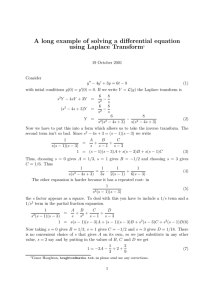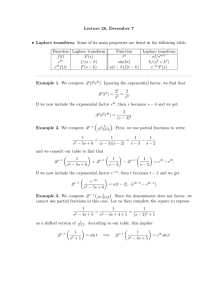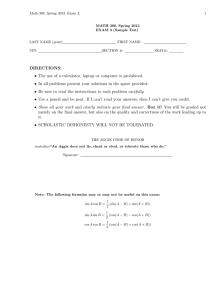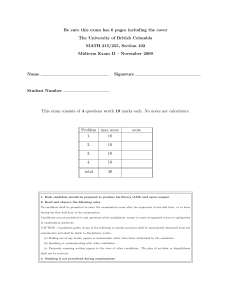Lecture 27, December 5 • − k e
advertisement
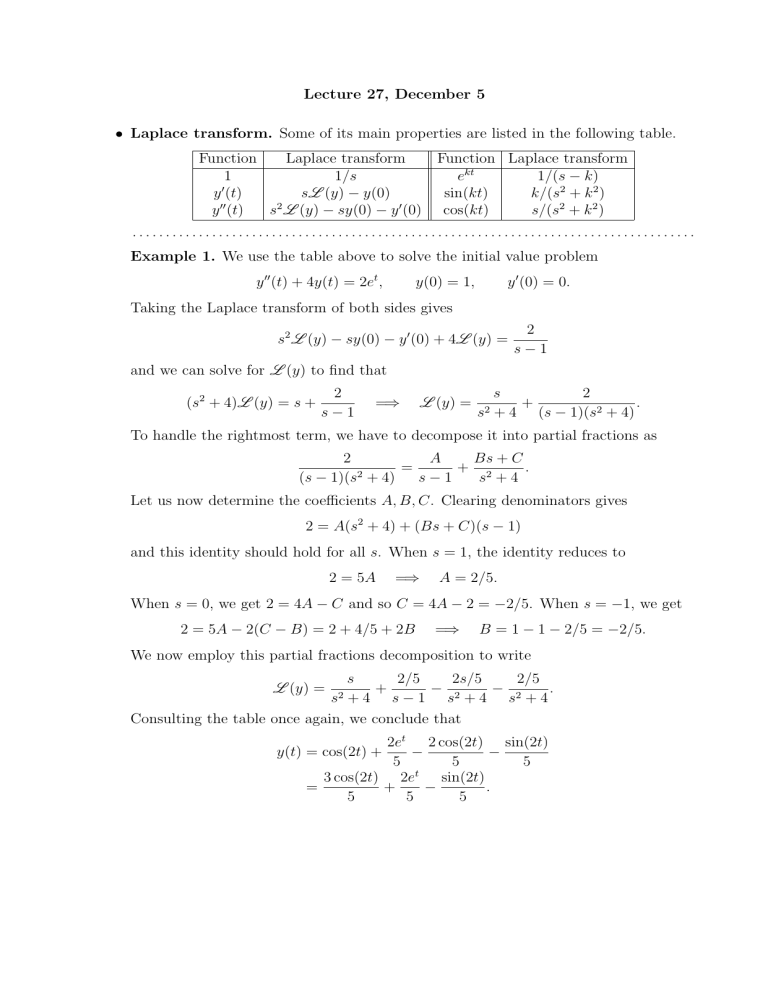
Lecture 27, December 5 • Laplace transform. Some of its main properties are listed in the following table. Function Laplace transform 1 1/s y ′ (t) sL (y) − y(0) y ′′ (t) s2 L (y) − sy(0) − y ′ (0) Function Laplace transform ekt 1/(s − k) sin(kt) k/(s2 + k 2 ) cos(kt) s/(s2 + k 2 ) ..................................................................................... Example 1. We use the table above to solve the initial value problem y ′′ (t) + 4y(t) = 2et , y ′ (0) = 0. y(0) = 1, Taking the Laplace transform of both sides gives s2 L (y) − sy(0) − y ′ (0) + 4L (y) = 2 s−1 and we can solve for L (y) to find that (s2 + 4)L (y) = s + 2 s−1 =⇒ L (y) = s2 s 2 + . + 4 (s − 1)(s2 + 4) To handle the rightmost term, we have to decompose it into partial fractions as 2 A Bs + C = + . (s − 1)(s2 + 4) s−1 s2 + 4 Let us now determine the coefficients A, B, C. Clearing denominators gives 2 = A(s2 + 4) + (Bs + C)(s − 1) and this identity should hold for all s. When s = 1, the identity reduces to 2 = 5A =⇒ A = 2/5. When s = 0, we get 2 = 4A − C and so C = 4A − 2 = −2/5. When s = −1, we get 2 = 5A − 2(C − B) = 2 + 4/5 + 2B =⇒ B = 1 − 1 − 2/5 = −2/5. We now employ this partial fractions decomposition to write s 2/5 2s/5 2/5 + − 2 − 2 . +4 s−1 s +4 s +4 Consulting the table once again, we conclude that L (y) = s2 2et 2 cos(2t) sin(2t) − − 5 5 5 3 cos(2t) 2et sin(2t) = + − . 5 5 5 y(t) = cos(2t) +
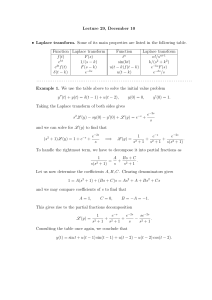


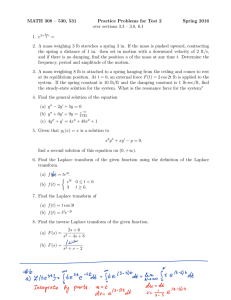
![2E2 Tutorial sheet 2 Solutions [Wednesday November 1st, 2000]](http://s2.studylib.net/store/data/010571893_1-0e618afe152facfff24885bad2c5a02f-300x300.png)

